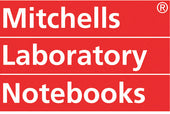1. Date, title and hypothesis
These fundamental elements are often overlooked but are essential for future reference. The date will help chart any chronology considering that others may be working in similar fields, and their work will often need to be cross-referenced. The title and hypothesis will help segment the area of work for any reviewer, including yourself, in months or years to come.2. Actions, data and process
To recreate the circumstances in which any experiments took place, you need to ensure that what you did, how you did it and the relevant results are all recorded. Why is this important? Remember a laboratory notebook is a legal document and can be used as evidence of a discovery if there is ever a dispute. For instance, there could be a case over a patent between two organisations and the data recorded in the lab book can be used as important evidence. It is also helpful to prove to peer groups what you've done if the result is ever challenged in a professional capacity. The bottom line is the information in your notebook should enable another scientist to reproduce your observations in the same scientific context.3. A signature page
Each Mitchells Laboratory Notebook includes a signature page which allows the identification of anyone making entries into the laboratory notebook or those witnessing entries. The signature page should contain names and specimen signatures.4. Name of reviewer and/or witness
Each of our experiment pages includes space for a name and signature. The notebook should be signed and dated by the reviewer and by an independent witness. By signing, the witness is confirming, to the best of their knowledge, that the work has been carried out properly and is their own.5. Summary
A good summary will allow continuity between experiments covering multiple notebooks, and help other individuals use or check work without reading through the entire document.6. Legibility
In some ways, this is the most critical element of all the points. Remember to ensure entries are legible as someone may need to use the notebook in the future to recreate the experiment or for legal reasons; it would be catastrophic for your hard work to be ignored because it's hard to read. If you make an error, cross through and do not use correction fluid or try to remove pages - if you try to tear a page out of the notebook, that section of the book will come apart. It's worth remembering the value of the information in the notebook - it must be accurate, relevant and easy to run through as it could be the cornerstone of crucial intellectual property in the future.7. Ownership
And finally, it's worth considering who the laboratory notebook belongs to. Most employers will expressly state they own the notebook and its contents. Bear that in mind when considering what you write in it and where you keep it.How do I pick a laboratory notebook?
We have a wide selection of laboratory notebook styles and colours for you to choose from. These are available to order online and all in stock books are usually dispatched within 48 hours.
Head to the Choosing a laboratory notebook section of our website, where you can find our simple guide to choosing the right laboratory notebook for you or your company. Click on the product code of your preferred book for full details and to order. We also produce semi-customised and customised laboratory notebooks so please contact us with your requirements.
If you have any questions, email us at sales@mitchellslaboratorynotebooks.co.uk or call 01622 833444 and we'd be happy to help.

